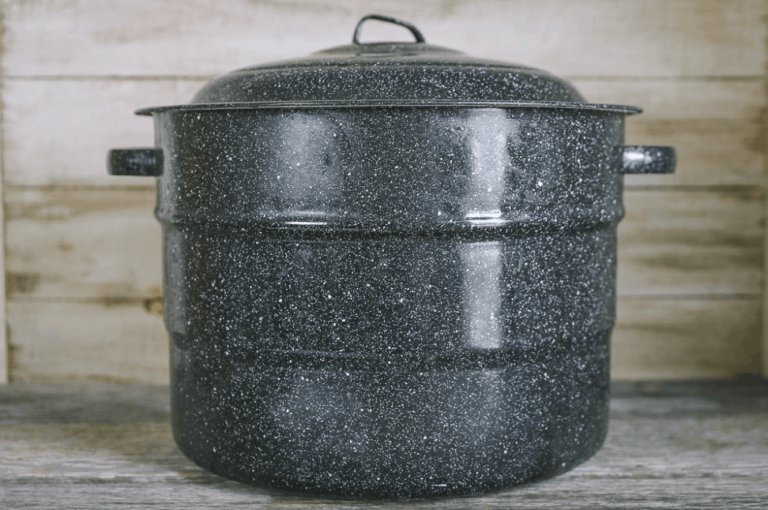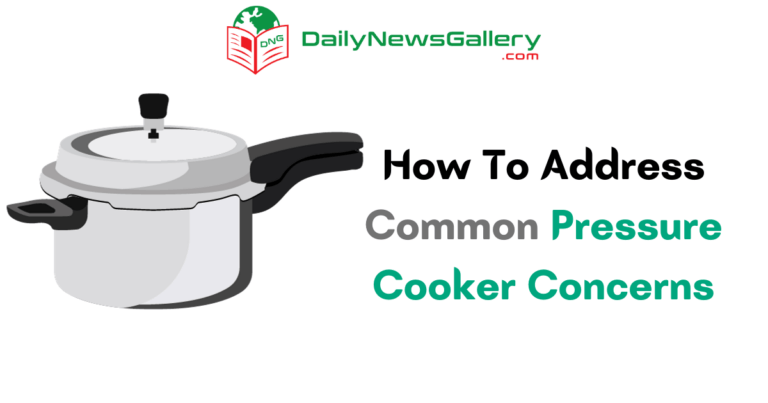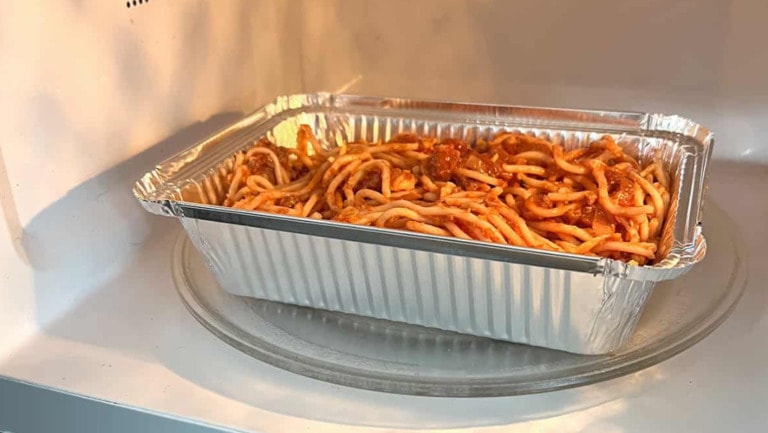
Looking to bring a burst of flavors to your meals? Say hello to pressure cookers! These kitchen wonders are here to revolutionize your cooking game. From tenderizing meat to intensifying flavors, pressure cookers are the secret behind delicious and time-saving meals.
With their ability to trap steam and build pressure, pressure cookers work their magic by infusing ingredients with incredible flavors. Whether you’re simmering a hearty stew or experimenting with exotic spices, pressure cookers are a chef’s best friend when it comes to creating mouthwatering dishes.
Get ready to unlock a world of culinary possibilities as we dive into the realm of flavor infusion and discover the incredible cooking techniques you can achieve with pressure cookers. From perfectly tender meats to vibrant vegetables and rich sauces, the possibilities are endless. Let’s embark on this flavorful journey together!
Flavor Infusion: Cooking Techniques in Pressure Cookers
Pressure cookers are a game-changer when it comes to flavor infusion in your cooking. Here are some expert techniques to elevate your dishes:
- Searing: Brown your ingredients for a rich depth of flavor.
- Deglazing: Add liquid to release tasty bits stuck to the pot’s bottom.
- Layering: Arrange ingredients strategically for maximum flavor infusion.
- Marinating: Let the pressure cooker work its magic on marinated meats.
- Quick-Release Method: Preserve the freshness and texture of delicate foods. Get ready to revolutionize your cooking!
Braising: Meltingly Tender Meats
Braising is a cooking technique that involves browning meat and then slow-cooking it in liquid. When using a pressure cooker for braising, the intense heat and pressure help to tenderize the meat faster while infusing it with the flavors of the braising liquid.
Start by browning your meat in the pressure cooker, then add your braising liquid, such as broth or wine, along with aromatics like onions, garlic, and herbs. Seal the cooker, bring it up to pressure, and let it cook for the recommended time. The result will be melt-in-your-mouth tender meat with a rich and flavorful sauce.
One benefit of braising in a pressure cooker is that the cooking time is significantly reduced compared to traditional braising methods. This makes it a great option for weeknight dinners when you want something comforting and delicious without spending hours in the kitchen.
Plus, the sealed environment of the pressure cooker helps to lock in the flavors, resulting in a more intense and concentrated taste.
To take your braised dishes to the next level, try experimenting with different flavors and ingredients.
For example, adding spices like cinnamon and star anise to a beef braise can give it a unique and exotic twist. Or, opt for a fruity red wine to braise your chicken for a rich and complex flavor profile. The possibilities are endless when it comes to braising in a pressure cooker.
Sautéing: Building Flavor from the Start
Sautéing is a cooking technique that involves browning ingredients quickly over high heat to develop depth of flavor. While traditionally done on the stovetop in a skillet, pressure cookers with sauté functions allow you to start building flavor right in the cooker. This is particularly useful when making dishes like stews or soups that require sautéed onions, garlic, and other aromatics as a base.
To sauté in a pressure cooker, simply select the sauté function and heat some oil or butter. Add your onions, garlic, and other desired ingredients, and cook until they become aromatic and lightly browned.
This step not only adds flavor to your dish but also helps to develop the Maillard reaction, a chemical process that gives food its delicious browned and caramelized taste.
Once you’ve sautéed your base ingredients, you can then proceed with adding the rest of your ingredients and cooking them under pressure. The flavors developed during the sautéing process will infuse throughout the dish, resulting in a more complex and robust flavor profile.
Steaming: Locking in Nutrients and Delicate Flavors
Steaming is a gentle and healthy cooking technique that is perfect for retaining the natural nutrients and delicate flavors of ingredients. While commonly associated with vegetables, steaming can also be used to cook seafood, grains, and even desserts.
With a pressure cooker, you can easily steam a wide variety of ingredients, ensuring they are cooked to perfection.
When steaming in a pressure cooker, it’s important to use a steamer basket or trivet to elevate the food above the liquid. This prevents the ingredients from becoming waterlogged and allows the steam to circulate and cook the food evenly.
Add the appropriate amount of water or broth to the bottom of the cooker, place the steamer basket or trivet in the cooker, and then add your ingredients. Seal the cooker, bring it up to pressure, and let it steam for the recommended time.
One of the advantages of steaming in a pressure cooker is that it requires less water compared to traditional steaming methods, which means that the nutrients and flavors are preserved more effectively. Additionally, the increased pressure helps to cook the ingredients faster, making it an efficient and convenient method for preparing a wide range of dishes.
Broiling: Crispy and Caramelized Delights
Broiling is a cooking technique that involves exposing food to high heat, typically from a top heating element, to create a crispy and caramelized exterior. While pressure cookers may not traditionally be associated with broiling, some modern models come with a broiler function that allows you to achieve the same delicious results without the need for a separate appliance.
When using the broiler function on a pressure cooker, make sure to place your food on a broiler-safe rack or pan and position it close to the heating element for maximum effect. The intense heat of the broiler will quickly brown and crisp the top of your dish, adding a beautiful texture and depth of flavor.
Broiling in a pressure cooker is particularly useful for dishes like gratins, casseroles, and even desserts like crème brûlée. It can give your dishes that coveted golden-brown crust and a lovely contrast to the tender interior. Just be mindful of the cooking times and adjust accordingly to ensure that your food doesn’t become overcooked or burnt.
Poaching: Tender and Flavorsome Delicacies
Poaching is a gentle cooking technique that involves cooking food in liquid at a low temperature. It is commonly used for delicate ingredients like fish, eggs, and fruit, as it ensures a tender and flavorsome result. With a pressure cooker, you can easily poach a wide range of ingredients, infusing them with the flavors of the poaching liquid.
To poach in a pressure cooker, simply add your desired poaching liquid, such as broth, wine, or flavored liquids, to the cooker. Bring it up to pressure, then carefully place your ingredients in the liquid. The pressure cooker will maintain a consistent low temperature, gently cooking the ingredients and locking in the flavors.
Poaching in a pressure cooker not only allows for faster cooking times but also intensifies the flavors of the poaching liquid. This is particularly beneficial when making dishes like poached fish, where the gentle cooking process ensures that the fish remains tender and moist. The result is a dish that is both visually appealing and bursting with flavor.
Marinating: Infusing Flavors Deeply
Marinating is a technique that involves soaking food in a seasoned liquid, known as a marinade, to enhance its flavor before cooking. While traditionally done for hours or even overnight, a pressure cooker can significantly reduce the marinating time while still imparting deep and rich flavors.
To marinate in a pressure cooker, simply add your liquid marinade and ingredients to the cooker, seal it, and let the pressure do the work. The increased pressure helps to speed up the marinating process, allowing the flavors to infuse more deeply into the food in a shorter amount of time.
This technique is particularly useful for tougher cuts of meat that benefit from a longer marinating time but can be cooked quickly in a pressure cooker.
For example, marinating beef short ribs in a flavorful mixture of soy sauce, ginger, and garlic before pressure cooking them will result in tender, juicy, and intensely flavorful ribs in a fraction of the time.
Smoking: Aromatic and Bold Flavors
Smoking is a cooking technique that involves exposing food to smoke from smoldering wood chips to infuse it with a rich and aromatic flavor.
While traditional smoking methods can be time-consuming and require specialized equipment, some modern pressure cookers come with smoking functions that allow you to achieve similar results in a fraction of the time.
To smoke in a pressure cooker, simply add the desired wood chips or smoking materials to the smoker tray or designated compartment of the cooker.
Place your food on a rack or in a pan, seal the cooker, and select the smoking function. The pressure cooker will generate controlled heat and smoke, infusing your food with a delicious smoky flavor.
Smoking in a pressure cooker is a fantastic way to add depth and complexity to a wide range of dishes. From smoked meats and fish to even vegetables and cheese, the possibilities are endless. Just be sure to follow the manufacturer’s instructions for smoking in your particular pressure cooker model to ensure safe and successful results.
Additional Cooking Techniques and Tips
1. Sous Vide: Precise Temperature Control
Sous vide is a cooking technique that involves sealing food in a bag and cooking it in a water bath at a precise temperature. While pressure cookers are not typically designed for sous vide cooking, some models come with a sous vide function that allows you to achieve the same results. This technique is particularly useful for preparing tender and juicy proteins, like steaks and chicken breasts.
2. Pressure-Frying: Crispy and Juicy Delights
Pressure frying is a technique commonly used in commercial settings to achieve perfectly crispy fried chicken. While not all pressure cookers are suitable for pressure frying, there are some specialized models available that can handle the high heat and pressure required. This method results in fried foods that are both crispy on the outside and juicy on the inside.
3. Dehydrating: Preserve and Concentrate Flavors
Dehydrating is a technique that involves removing moisture from food to preserve it and intensify its flavor. While not all pressure cookers have dehydrating functions, there are some models that come with this capability. Dehydrating in a pressure cooker is a great way to make ingredients like dried fruits, jerky, and even dried herbs.
4. Infusing Liquids: Flavorful Bases for Recipes
Pressure cookers can also be used to infuse liquids with various flavors, such as stocks, broths, and even oils. By using the pressure cooking function, you can rapidly extract the flavors from the ingredients and create a rich and flavorful base for your recipes. This is an excellent technique for adding depth to sauces, soups, and stews.
5. Quick Soaking: Rapidly Tenderizing Beans and Legumes
Beans and legumes often require overnight soaking before cooking to reduce their cooking time and improve their texture. With a pressure cooker, you can skip the lengthy soaking process and quickly tenderize these ingredients.
Simply rinse the beans or legumes, add them to the pressure cooker with enough water or broth to cover, and cook for the recommended time. The pressure will break down the tough fibers, resulting in perfectly cooked beans in a fraction of the time.
By harnessing the power of a pressure cooker and utilizing these various cooking techniques, you can transform your dishes into flavor-packed masterpieces. From braising and sautéing to steaming and smoking, each technique offers a unique way to infuse your food with delicious flavors.
So, don’t be afraid to experiment and get creative in the kitchen. Whether you’re a seasoned chef or just starting your culinary journey, these techniques are sure to take your pressure cooker recipes to new heights.
Frequently Asked Questions
Are you curious about flavor infusion techniques using pressure cookers? Look no further! We’ve compiled some frequently asked questions to help you explore the world of cooking techniques in pressure cookers and achieve delicious, flavorful results.
1. How does pressure cooking enhance flavor infusion in dishes?
Pressure cooking is a game-changer when it comes to flavor infusion.
By sealing the pot tightly, pressure cookers create a pressurized environment that traps and intensifies flavors. As the food cooks under pressure, the steam generated forces the flavors to penetrate deep into the ingredients, resulting in rich and well-seasoned dishes. This rapid cooking method also helps to retain the natural flavors of the ingredients, ensuring a burst of taste in each bite.
Additionally, pressure cooking reduces the cooking time, allowing the flavors to meld quickly and efficiently. Whether you’re making a soup, stew, or curry, pressure cooking helps to extract maximum flavor from the ingredients, resulting in deliciously infused dishes.
2. Can I use spices and herbs in a pressure cooker for flavor infusion?
Using spices and herbs is a fantastic way to enhance flavor infusion in your pressure cooker dishes. The high-pressure and moist environment inside the cooker helps to release and permeate the flavors of the spices and herbs throughout the dish. Whether you’re using whole spices, ground spices, or fresh herbs, pressure cooking will intensify their aroma and taste.
When using whole spices, it’s a good idea to lightly toast them in a dry pan before adding them to your dish.
This process will awaken their flavors and give your dishes an extra depth of taste. Fresh herbs can be added towards the end of the cooking process to preserve their essence. Don’t be afraid to experiment with different combinations of spices and herbs to create unique and mouthwatering flavor profiles.
3. Are there specific ingredients that work best for flavor infusion in pressure cooker recipes?
Many ingredients are excellent for flavor infusion in pressure cooker recipes. For savory dishes, meats like beef, pork, and chicken lend themselves well to pressure cooking.
Tough cuts of meat become tender and flavorful due to the prolonged exposure to heat and moisture. Vegetables such as onions, garlic, and carrots are also great for enhancing the flavor of stews, soups, and sauces.
When it comes to sweet dishes, ingredients like fruits, especially apples and pears, become beautifully infused with spices in pressure cooker desserts.
Rice and grains, like quinoa and barley, absorb flavors wonderfully and can be used as a base for a variety of dishes. Don’t be afraid to get creative and experiment with different ingredients to discover your favorite flavor combinations.
4. Can I use marinades or sauces in a pressure cooker to enhance flavor infusion?
Absolutely! Marinating your proteins or adding flavorful sauces to your pressure cooker recipes is an excellent way to enhance flavor infusion. Prior to cooking, you can marinate your meats or vegetables in a flavorful mixture of herbs, spices, and liquids. The pressure cooking process will help the ingredients soak up the marinade, resulting in a deliciously seasoned and tender final product.
Adding sauces to your pressure cooker recipes can also elevate the flavors. Whether it’s a homemade sauce or a store-bought one, you can incorporate it into your dishes to enhance the taste. The high pressure and heat will help infuse the ingredients with the flavors of the sauce, creating a delightful and well-rounded dish.
5. What are some tips to ensure successful flavor infusion in pressure cooker dishes?
To achieve successful flavor infusion in your pressure cooker dishes, there are a few tips to keep in mind. First, make sure to layer the flavors by adding the ingredients in the correct order. Start with aromatic ingredients like onions and garlic to build a flavorful base. Next, add the main ingredients and spices to create complexity.
Another tip is to utilize natural release after cooking. Allowing the pressure to release naturally for a few minutes can help the flavors settle and develop further. Finally, taste and adjust the seasonings before serving.
Sometimes, a squeeze of lemon juice or a sprinkle of fresh herbs can take the flavor infusion to the next level. With these tips in mind, you’ll be on your way to creating delicious and flavorful dishes in your pressure cooker.
Pressure cookers are a great way to make flavorful and delicious meals in less time. The high pressure and heat help infuse flavors into the ingredients, making the food taste amazing. The sealed environment also keeps nutrients locked in and prevents the loss of flavors.
There are different cooking techniques you can use in a pressure cooker to enhance the flavor, such as browning, marinating, and using spices. These techniques can take your dishes to the next level and impress your family and friends. With a pressure cooker, you can create tasty meals that are both quick and flavorful.






